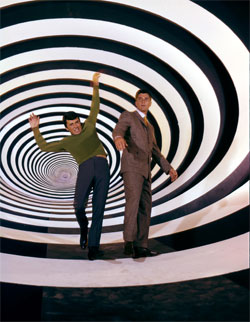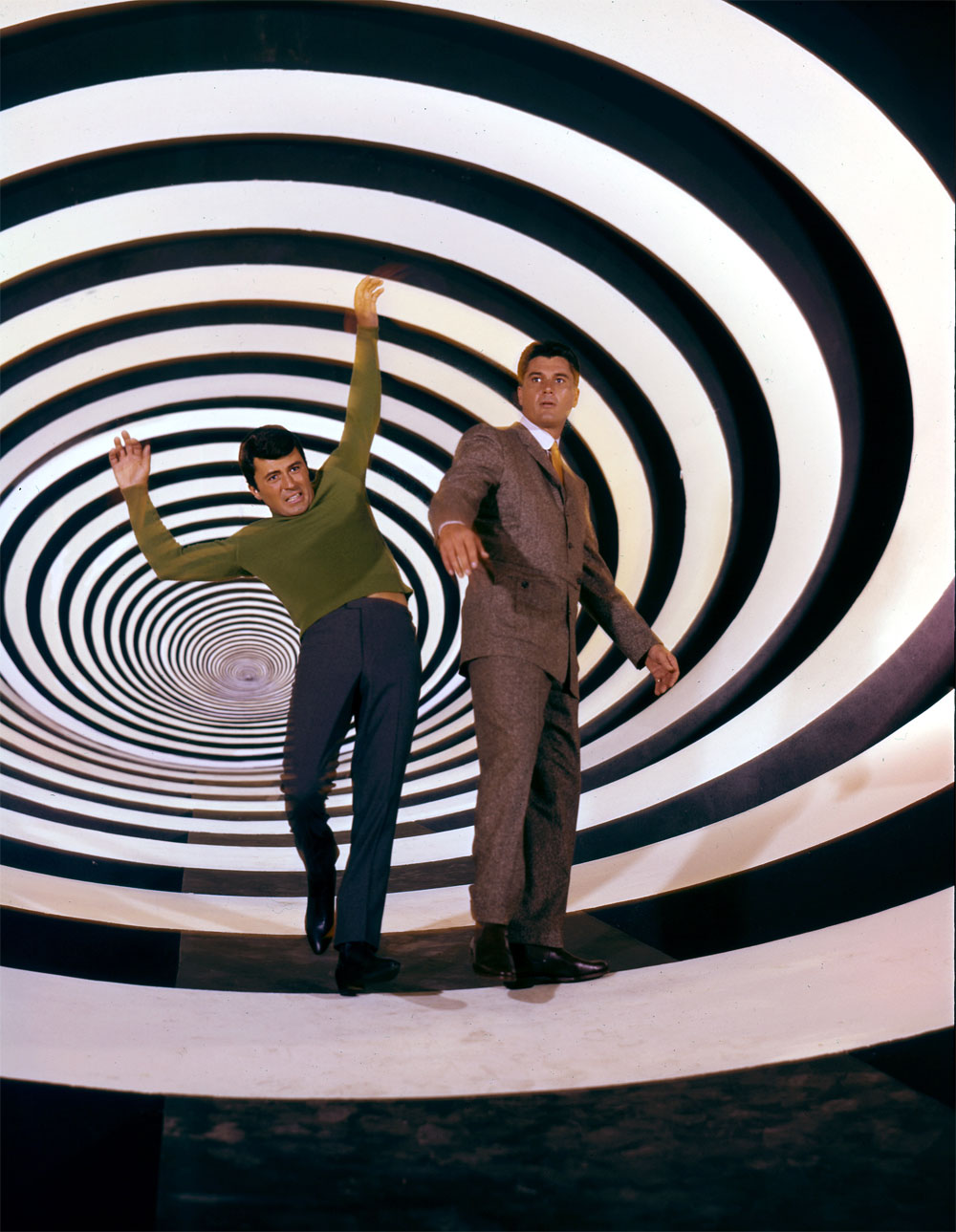Time Travel Beats Quantum Mechanics
The ability to travel back in time, though entirely hypothetical, isn’t explicitly forbidden by our current understanding of space and time, embodied in the general theory of relativity. Time travel tends to play havoc with other laws of physics, however, and in the 29 May Physical Review Letters researchers report another example. They show that data encryption systems relying on quantum principles can be broken by allowing the data stream to interact with a quantum state that travels back in time. This scenario doesn’t present an immediate threat to information security, the authors assert. Rather, it’s an example of the kind of contradiction that any unified theory of quantum mechanics and gravity will have to resolve.
A closed timelike curve (CTC) is a looping path that connects back on itself by going forward then backward in time. A CTC might rely on a spacetime wormhole, for example, that connects a place and time in the future with another location at some earlier time. Regardless of whether such paths exist, they raise awkward questions, notably the “grandfather paradox” in which a person goes back in time and kills an immediate ancestor.
In 1991, David Deutsch of Oxford University in England worked out how to avoid such paradoxes in the case of a quantum particle that travels around a CTC and interacts somewhere along the way with another particle. He proved that it’s always possible to find a quantum state that gives the CTC particle a ”Groundhog Day existence,” in which it cycles around the loop forever, always interacting with the other particle in exactly the same way at the same point in spacetime [1].
Todd Brun of the University of Southern California in Los Angeles and his colleagues have now found a way to use states defined by the Deutsch formulation to decode quantum-encrypted messages. Such a message could be sent as a series of particles, each in quantum state “zero,” quantum state “one,” or a combination state called a superposition. The intended recipient measures each particle but needs additional information after-the-fact from the sender to distinguish the superpositions from the non-superpositions. But a spy who could distinguish “on the fly” between, say, a zero and a superposition state could intercept the message and also send particles to the recipient that mimic the originals, thereby avoiding detection.
For the spy to accomplish this, the researchers imagine a particle entering a CTC so that it travels around and back in time, allowing it to interact with its future self, so to speak, before going on its way again. They describe an interaction that, in the simplest example, leaves a particle in the zero state unchanged but transforms a superposition of zero and one into a pure one state. A standard measurement by the spy that distinguishes one from zero can then reveal with complete certainty whether the initial state was zero or a superposition.
Ordinarily such a transformation wouldn’t be possible without advanced knowledge of the incoming state. The trick, Brun explains, is that the particle interacts with the transformed version of itself that comes back from the future. Brun says the scheme doesn’t violate any laws of physics, but he admits that the logic is hard to grasp. Compared with regular chronological reasoning, he says, “it’s definitely cheating.”
The researchers go on to show how more complex interactions with a CTC can serve to decipher particles embodying superpositions of any number of states. According to Deutsch, the work provides support for current theories of quantum information, showing that they can handle even very exotic situations. On the other hand, Brun acknowledges, if you believe quantum mechanics is infallible, you might question Deutsch’s 1991 paper, or even the existence of CTCs altogether. Whatever the answer, the difficulties that CTCs cause for quantum mechanics are problems that only a full theory of quantum gravity can resolve, Brun and his colleagues conclude.
–David Lindley
David Lindley is a freelance science writer, now retired. His most recent book is The Dream Universe: How Fundamental Physics Lost Its Way (Penguin Random House, 2020).
References
- D. Deutsch, “Quantum Mechanics near Closed Timelike Lines,” Phys. Rev. D 44, 3197 (1991)
More Information
Focus stories:
Landmark: The Birth of Wormholes (2005) Wormhole Construction: Proceed with Caution (1998)





